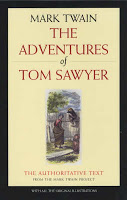New Survey Spotlights Ongoing Concerns for People Living with Hemophilia B
This is a paid public announcement from CSL Behring and does not constitute an endorsement of products or services. When you click on the links in this blog entry, you will be directed to the CSL Behring website. LA Kelley Communications always advises you to be a savvy consumer when contacting any company; do not reveal identifying information against your will.
Carefully controlled schedules. Undercurrents of uncertainty. Persistent pain. People who are living with hemophilia B, and those who love them, face a lifetime of managing the complexities of this condition.
While significant advancements have been made in the treatment of hemophilia B, there is still a desire for new treatment options to address unmet needs for people with moderate to severe forms of the condition.
In fact, a recent CSL Behring-sponsored survey on the burdens of living with hemophilia B found that even with treatment, people with hemophilia B are still experiencing spontaneous bleeds and joint pain, and would consider switching to a new therapy that may be more effective. The online survey conducted by CSL Behring in partnership with the Coalition for Hemophilia B included 110 people with the rare bleeding disorder who are on either short-term or long-term prophylactic treatment.* The survey revealed that during a six-month period, respondents reported an average of 4.2 spontaneous bleeds and 2.2 joints bleeding three or more times.

Additionally, 87% of respondents reported experiencing joint pain at least a few times a month.

“The survey really highlighted the concerns and challenges that people with hemophilia B still face,” said Kim Phelan, Chief Operating Officer of The Coalition for Hemophilia B. “Spontaneous bleeds, joint damage and joint pain are just a few of the burdens that some in the hemophilia B community must live with.
With up to 156 intravenous infusions per year, people with hemophilia B are also at risk for vein collapse.

The life-long effects of living with and managing hemophilia B however aren’t just physical. More than 40% of people living with hemophilia B experience depression, anxiety, or other psychological disorders.
As new treatments become available to potentially address the unmet needs within the hemophilia B community, discussion with healthcare professionals on treatment goals is essential. It’s time to ask, “Is there a better treatment option for me?”
*Short-term prophylaxis is prolonged treatment following a bleed until full recovery and prophylaxis prior to physical activity. Long-term prophylaxis is regular preventative injections. Of the 110 people surveyed, 29 were being treated with short-term prophylaxis only, 74 were being treated with long-term prophylaxis only, and 7 were being treated with both short-term and long-term prophylaxis.
©2023 CSL Behring LLC 1020 First Avenue, PO Box 61501, King of Prussia, PA 19406-0901 USA
www.CSLBehring.com USA-HGX-0330-APR23


